In the realm of electronics and DIY projects, soldering is an indispensable skill that connects components and breathes life into circuits. However, this essential process often generates smoke and fumes that can pose health risks if inhaled over time. Enter the fume extractor – an invaluable tool that can make your soldering station not just functional, but safe. DIY enthusiasts and professionals alike can benefit from constructing a 12V fan-powered solder fume extractor, a project that promises to revolutionize your workspace by harnessing the power of innovation and simplicity.
### Understanding the Need for a Fume Extractor
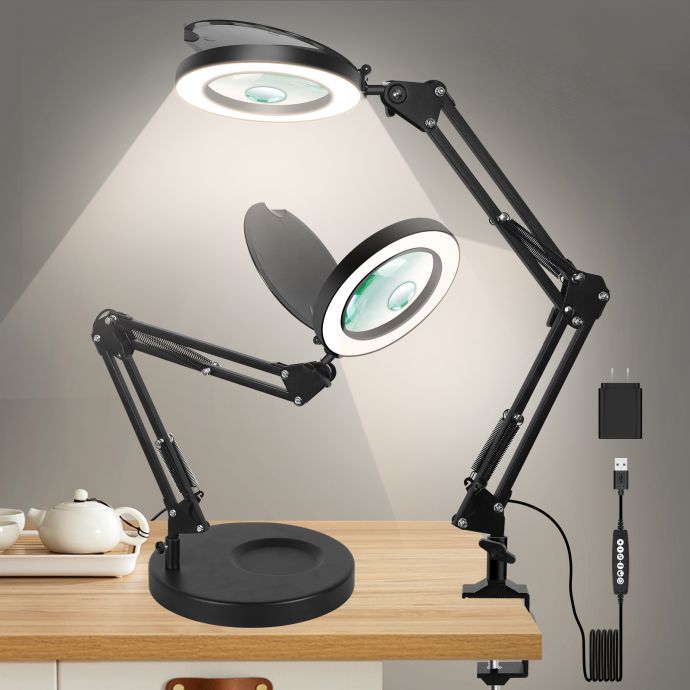
Soldering involves the melting of solder wire to join components, which releases fumes containing volatile organic compounds (VOCs) and other potentially harmful substances such as lead, if you're using lead-based solder. These fumes can be irritating to the eyes, throat, and lungs, especially in poorly ventilated areas. While safety masks and well-ventilated spaces are recommended, a fume extractor offers an efficient solution by capturing and filtering fumes directly from the source.
### The Concept Behind the DIY 12V Fan-Powered Solder Fume Extractor
A fume extractor essentially works by drawing in the smoke and passing it through a series of filters to clean the air. The 12V fan-powered solder fume extractor is a cost-effective and efficient option for hobbyists and professionals. Powered by a 12V DC fan, this DIY solution integrates seamlessly into your workstation without compromising on performance.
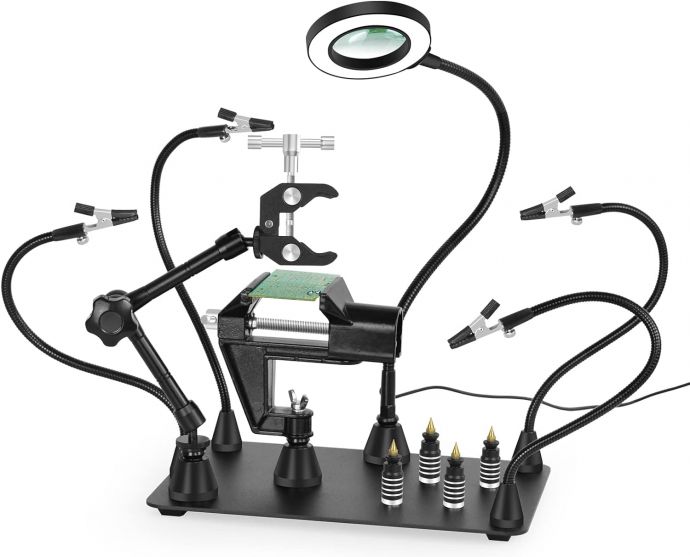
#### Benefits of a 12V Setup:
- **Portability**: A low-voltage system is typically lightweight and easy to move, perfect for lead-free, versatile work environments.
- **Low Power Consumption**: Requires minimal energy, making it environmentally friendly and economical.
- **Scalability**: Ideal for small to medium-sized workspaces, yet can be adjusted for larger environments with additional units.
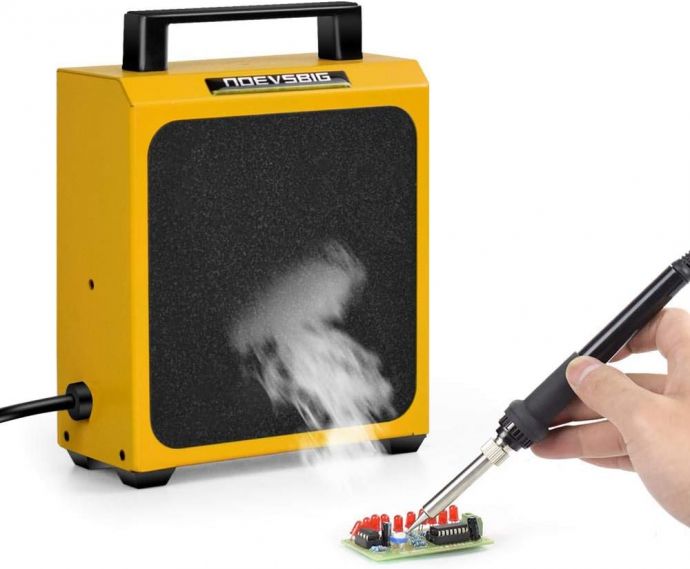
### Materials Needed for the DIY Project
Before diving into the construction, gathering the right materials is crucial. Here's a checklist of what you'll need:
1. **12V DC Fan**: Opt for a fan with sufficient airflow (around 40-60 CFM) to effectively suck up the fumes. Computer case fans work well for this purpose.
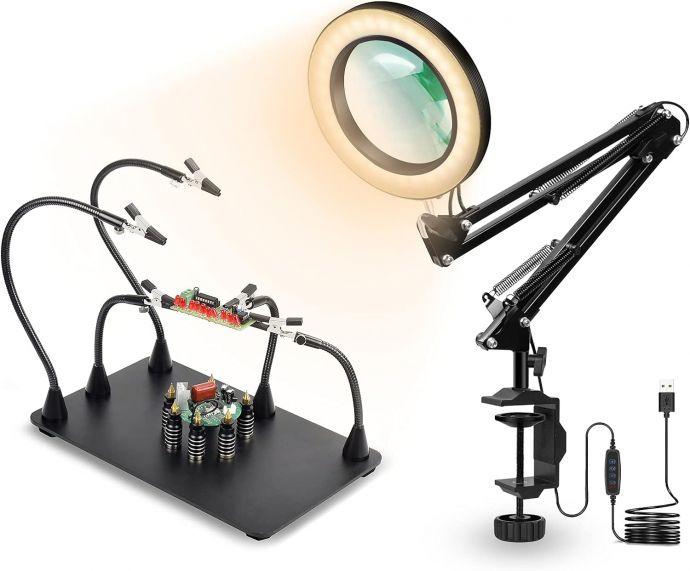
2. **Activated Carbon Filter**: Essential for filtering out harmful particulates. These are often available as pre-cut sheets or pads.
3. **Fan Grill**: Provides a protective barrier against accidental contact with the fan blades.
4. **12V DC Power Supply**: A power adapter or battery pack capable of delivering adequate current to the fan.
5. **Enclosure or Frame**: To house the fan and filter, you can repurpose items like sturdy plastic containers or design a custom frame using wood or acrylic.
6. **Basic Tools**: Screwdriver, hot glue gun, wire connectors, and a soldering iron for setting up the electrical connections.
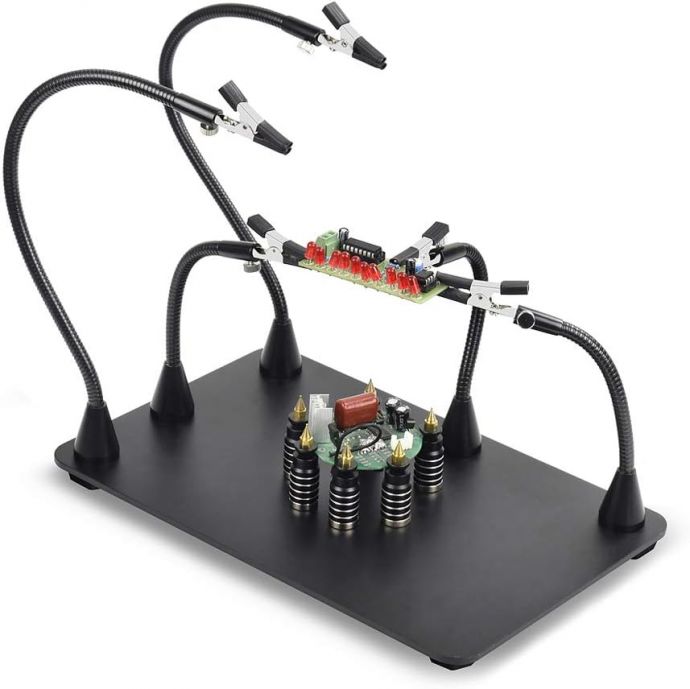
### Step-by-Step Construction Guide
#### Step 1: Designing the Enclosure
The enclosure serves as the main body, housing the fan and filter securely while allowing maximum airflow. Ensure that the enclosure is slightly larger than the fan to allow for proper air circulation and easy assembly.

1. **Choose the Material**: Depending on availability and convenience, select a material that is easy to cut and manipulate.
2. **Cut Openings**: Make precise cuts for the fan and grill on one side, and an additional opening or slot for the filter on the opposite side or an adjacent panel.
#### Step 2: Assembling the Fan
1. **Mount the Fan**: Secure the fan to the designated opening using screws or a glue gun, with the airflow direction set to draw air into the enclosure.

2. **Attach the Grill**: Position the grill over the fan to prevent accidental contact with the blades, ensuring safety during operation.
#### Step 3: Installing the Filter
1. **Filter Placement**: Attach the activated carbon filter behind the fan, covering the full area to maximize exposure to the airflow.
2. **Secure the Filter**: Use clips or a custom slot in the enclosure to hold the filter firmly in place, allowing for easy replacement when needed.
#### Step 4: Electrical Connections
1. **Power Supply Setup**: Connect the fan to the 12V power supply, ensuring correct polarity to maintain fan rotation direction.
2. **Testing the Fan**: Power on the fan to check for proper operation. The fan should start drawing air towards the filter upon activation.
### Optimizing Performance and Maintenance
Regular maintenance ensures that your fume extractor continues to operate efficiently. Here’s how to keep it in optimal condition:
- **Filter Replacement**: Depending on usage, replace the activated carbon filter every 2-4 weeks to maintain effective fume capture.
- **Cleaning the Enclosure**: Periodically clean the inside of the enclosure to prevent dust buildup, which can impede airflow.
- **Fan Maintenance**: Lubricate the fan bearings occasionally if your model supports it, to extend its lifespan and minimize noise.
### Enhancements and Upgrades
For those seeking additional functionality, consider these enhancements:
- **Speed Controller**: Incorporate a variable speed controller to adjust fan speed based on your soldering intensity and air cleaning needs.
- **LED Lighting**: Add LED strips inside the enclosure for better visibility of your workspace.
- **Noise Dampening**: Use sound-absorbing materials around the enclosure to reduce operational noise.
### Conclusion
Creating a DIY 12V fan-powered solder fume extractor is not only an engaging project but a transformative addition to your soldering station. With careful planning and execution, you can master the art of smoke prevention, paving the way for healthier, more comfortable electronics work. This project not only enhances your soldering environment but also reflects a commitment to safety and sustainability in your DIY endeavors. So, equip your workstation with this simple yet powerful tool, and breathe easy as you unleash your creativity.









